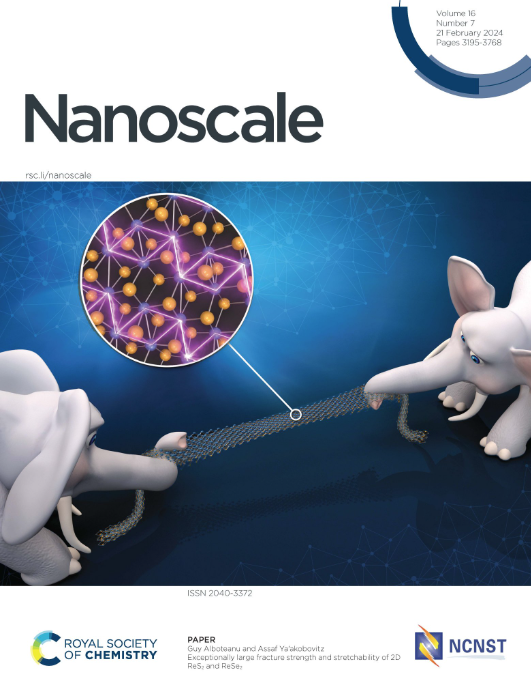Defective plane induced fractal TON zeolites for efficient hydroisomerization of long-chain hydrocarbons
IF 5.8
3区 材料科学
Q1 CHEMISTRY, MULTIDISCIPLINARY
引用次数: 0
Abstract
Fractal crystals are a class of fascinating crystals in this world, typically captured in dense crystal phases like snowflakes, graphene, and metal alloys. Nevertheless, such crystal analogues are quite rare in framework crystal phases, and their structural origins remain an intriguing enigma. In this work, we successfully constructed a series of fractal TON zeolites via a rare twinning mode, thereby revealing their structural origins. The continuous rotational electron diffraction technique solved its unique crystallographic structure. The fractal boundary exhibited coherence along the {021} facets and left the periodic dangling silanol defects. As evidenced by spatial element reconstruction and structural analysis, we found that the TON fractal was triggered by organic cations anchoring heteroatoms at the framework T3 site. Such fractal dimensions of TON can be effectively tailored by adjusting the heteroatom concentration in the synthetic system. The Pt-loaded fractal TON zeolite bifunctional catalyst demonstrated remarkable performance in the hydroisomerization of n-hexadecane with a maximum isomer yield of 84.4%, which is 28.9% higher than that of the Pt/rod-like TON catalyst, attributed to the more accessible active sites of the fractal architecture. Unravelling the twinning structure and its origin of zeotype catalysts would afford novel insights for the development of promising advanced heterogeneous catalysts.

缺陷平面诱导的分形TON分子筛用于长链烃的高效加氢异构化
在这个世界上,分形晶体是一类迷人的晶体,通常在雪花、石墨烯和金属合金等致密晶相中被捕获。然而,这样的晶体类似物在框架晶体相中是相当罕见的,它们的结构起源仍然是一个有趣的谜。在这项工作中,我们成功地通过一种罕见的孪生模式构建了一系列分形的TON沸石,从而揭示了它们的结构起源。连续旋转电子衍射技术解决了其独特的晶体结构。分形边界沿{021}面表现出相干性,并留下周期性的悬垂硅烷醇缺陷。通过空间元重构和结构分析,我们发现TON分形是由有机阳离子在骨架T3位点锚定杂原子引发的。通过调整合成体系中杂原子的浓度,可以有效地调整TON的分形维数。Pt负载的分形TON分子筛双功能催化剂在正十六烷的加氢异构反应中表现出了显著的性能,最大同分异构体收率为84.4%,比Pt/棒状TON催化剂高28.9%,这是由于分形结构的活性位点更易接近。解开正型催化剂的孪生结构及其起源,将为开发有前途的先进非均相催化剂提供新的见解。
本文章由计算机程序翻译,如有差异,请以英文原文为准。
求助全文
约1分钟内获得全文
求助全文
来源期刊

Nanoscale
CHEMISTRY, MULTIDISCIPLINARY-NANOSCIENCE & NANOTECHNOLOGY
CiteScore
12.10
自引率
3.00%
发文量
1628
审稿时长
1.6 months
期刊介绍:
Nanoscale is a high-impact international journal, publishing high-quality research across nanoscience and nanotechnology. Nanoscale publishes a full mix of research articles on experimental and theoretical work, including reviews, communications, and full papers.Highly interdisciplinary, this journal appeals to scientists, researchers and professionals interested in nanoscience and nanotechnology, quantum materials and quantum technology, including the areas of physics, chemistry, biology, medicine, materials, energy/environment, information technology, detection science, healthcare and drug discovery, and electronics.
 求助内容:
求助内容: 应助结果提醒方式:
应助结果提醒方式:


